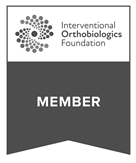Although clinical studies are scarce, those that have been published indicate that cupping may provide both long- and short-term benefits for tissue recovery and pain reduction. Many athletes opt for cupping as a noninvasive and drug-free alternative therapy for managing muscle pain, reducing fatigue and speeding recovery.
Cupping therapy works by expanding the capillaries and promoting blood flow into and out of the affected tissues. During a cupping session, the patient lies face-down on a cupping massage table, as cups are strategically placed on the back, arms and/or shoulders, depending on the targeted tissues.
After placement, the cups are heated until they create a suction vacuum effect. Cupping targets skin and deep tissues to relieve pain, break up scar tissue and relax myofascial and connective tissues. Unlike massage, which applies pressure to targeted areas, cupping draws pressure away from affected tissues.
During dry cupping, also known as fire cupping, a trained clinician arranges cups on the patient’s back and then carefully applies heat. The heated cups create a vacuum seal, and are left in place for five to 15 minutes as they cool. The vacuum pulls the skin into the heated cups, stretching underlying tissue and increasing blood flow to facilitate healing.
Wet cupping, a more invasive treatment, is used in certain parts of the Middle East. During the procedure, a tiny incision is made in the patient’s skin before the cup is applied. Instead of heating the cups, the clinician uses a pump to remove a small amount of the patient’s blood. The technique is said to improve energy and remove toxins.
Dry cupping is a safe and non-invasive treatment that most people find soothing and relaxing. However, cupping is not for everyone.
Note that cupping therapy may leave discolored marks on the surface of your skin that can remain for up to two weeks.









































































